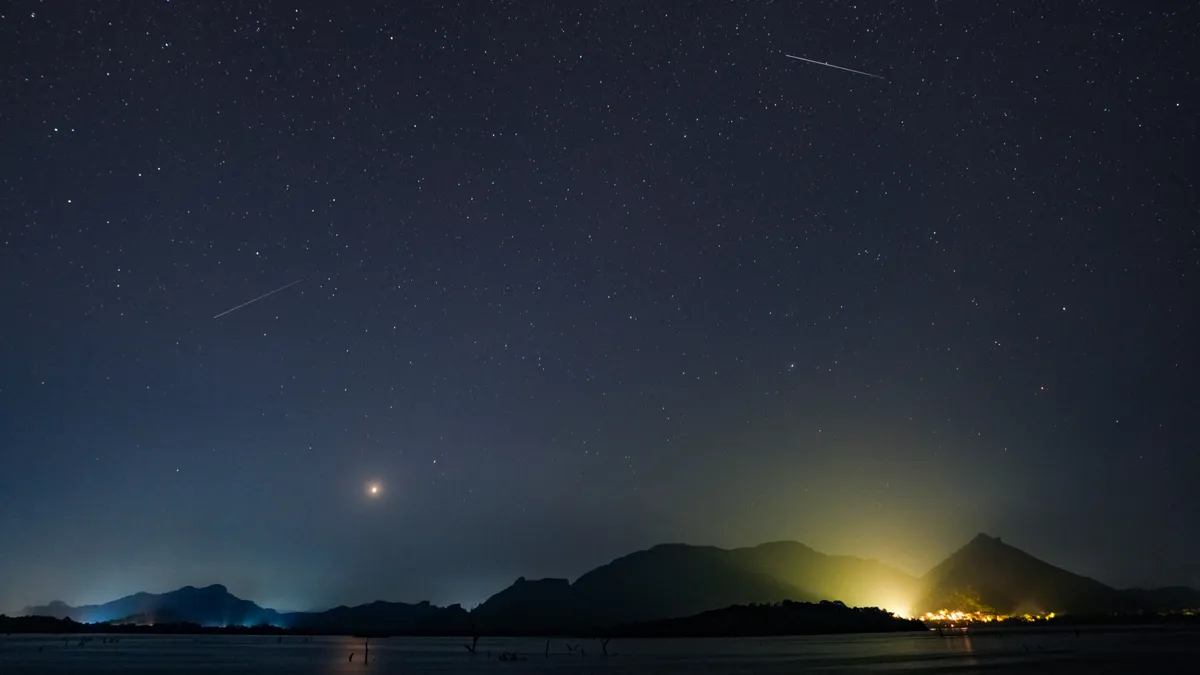
The Eta Aquarid meteor shower reached its peak on May 6, offering a mesmerizing cosmic spectacle for skywatchers around the globe. As debris from the renowned Halley's Comet entered Earth's atmosphere, it transformed into stunning 'shooting stars' visible to stargazers across various regions. This annual meteor shower is particularly noteworthy for its breathtaking display and the excitement it brings to astronomy enthusiasts.
The peak of the 2025 Eta Aquarid shower occurred when Earth passed through the densest segment of Halley's debris trail. According to NASA estimates, observers in the southern hemisphere could witness up to 50 meteors per hour, while those in the northern regions experienced a more modest display of around 10 meteors per hour. For those who missed the peak, there’s no need to feel disheartened; the Eta Aquarids will remain active until May 21, albeit at a reduced rate, providing ample opportunities to spot shooting stars before Earth exits Halley’s debris field.
The stargazing community shared some breathtaking images of the Eta Aquarids. Delailah Bee, for instance, captured a stunning vista of the Milky Way adorned with meteors during her camping trip to Tamblingan Lake, Indonesia, on May 4. Using a POCO X5 Pro smartphone, she snapped this captivating scene between 2-4 a.m. local time.
Another remarkable capture came from Minnesota-based Twitter/X user @EricTheSpaceCat, who compiled a mesmerizing video of Eta Aquariid meteors streaking through the night sky, leaving long trails as they hurtled towards Earth at speeds of approximately 40 miles per second. Meanwhile, in Olney, Maryland, X user @MyDronePro recorded an Eta Aquarid on the night of May 2, just as the meteor shower was approaching its peak.
In Pocatello, Idaho, residents were treated to a spectacular fireball that lit up the night sky in the post-sunset hours of May 3. This bright object quickly vanished, leaving onlookers in awe. Interestingly, a similar cosmic visitor was captured on a smart doorbell camera by Reddit user Jough83 in southwest Montana around the same time. The video, titled "Caught the meteor on my doorbell," showcases the excitement surrounding the meteor shower.
Photographer Mathew Browne also shared a stunning image on Instagram, capturing a meteor photobombing his nighttime shot of the Church Doors Cove in Pembrokeshire, UK, at 4 a.m. local time on April 28. It’s important to note that both the Eta Aquarid and the Pi Puppid meteor showers were active during this period, and there’s a possibility that the meteor Browne captured was a sporadic one, unrelated to either annual shower.
Additionally, Reddit user LukaBrattzi recorded a speeding meteor while filming a dramatic lightning storm over Austin, Texas, using a GoPro camera around 8:40 p.m. local time, just before the Eta Aquarid peak. This incident raised questions about the nature of meteors during such events and added to the excitement of the meteor shower.
Stargazers can look forward to another captivating display of shooting stars when Earth embarks on its second yearly passage through Halley's debris trail later in 2025, signaling the onset of the Orionid meteor shower. The Orionids, which originate from the constellation Orion, are expected to peak on the nights of October 22-23. For those keen on exploring the wonders of the solar system and beyond, it’s advisable to check out our comprehensive guides on the best binocular and telescope deals available in 2025.